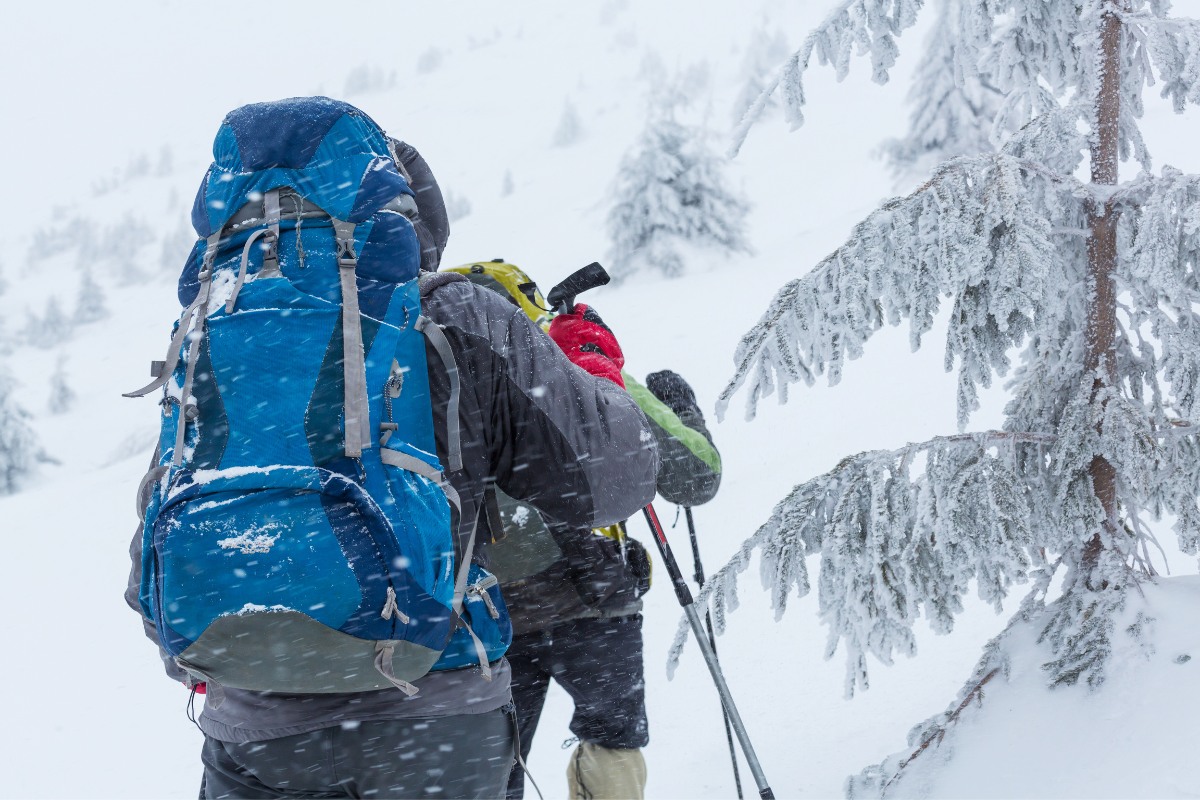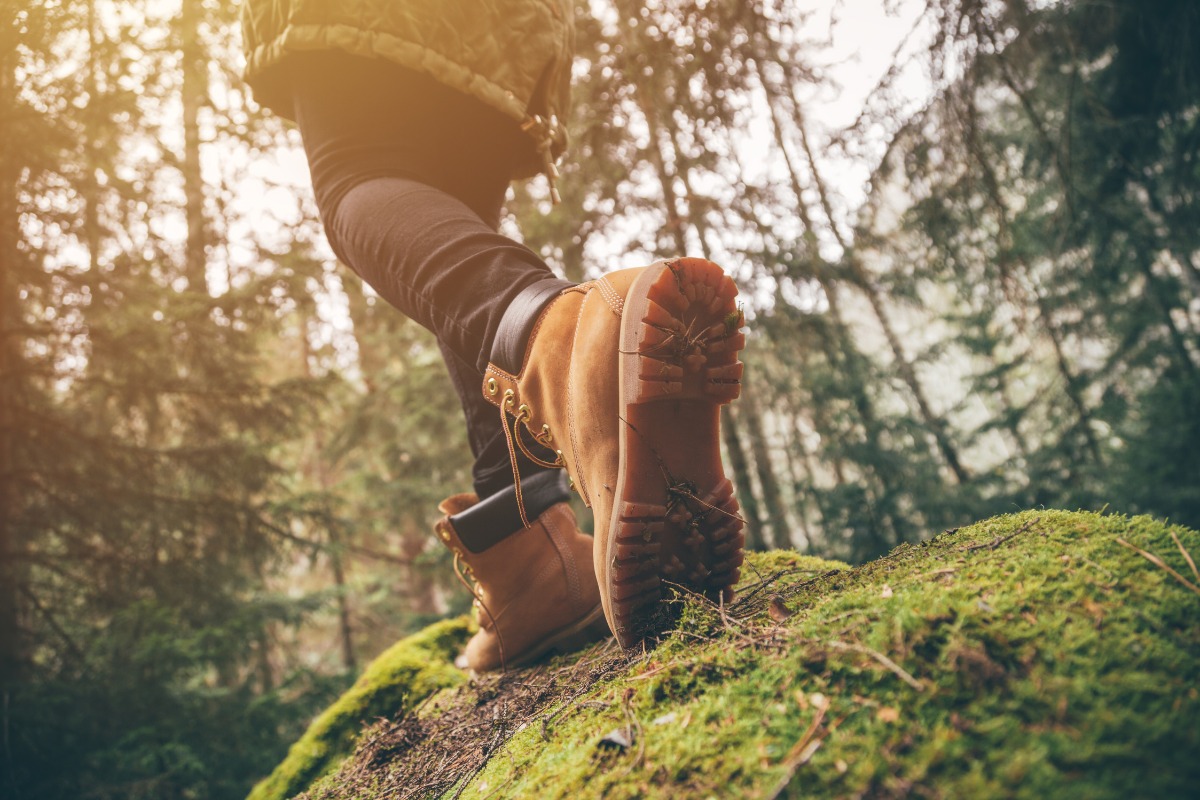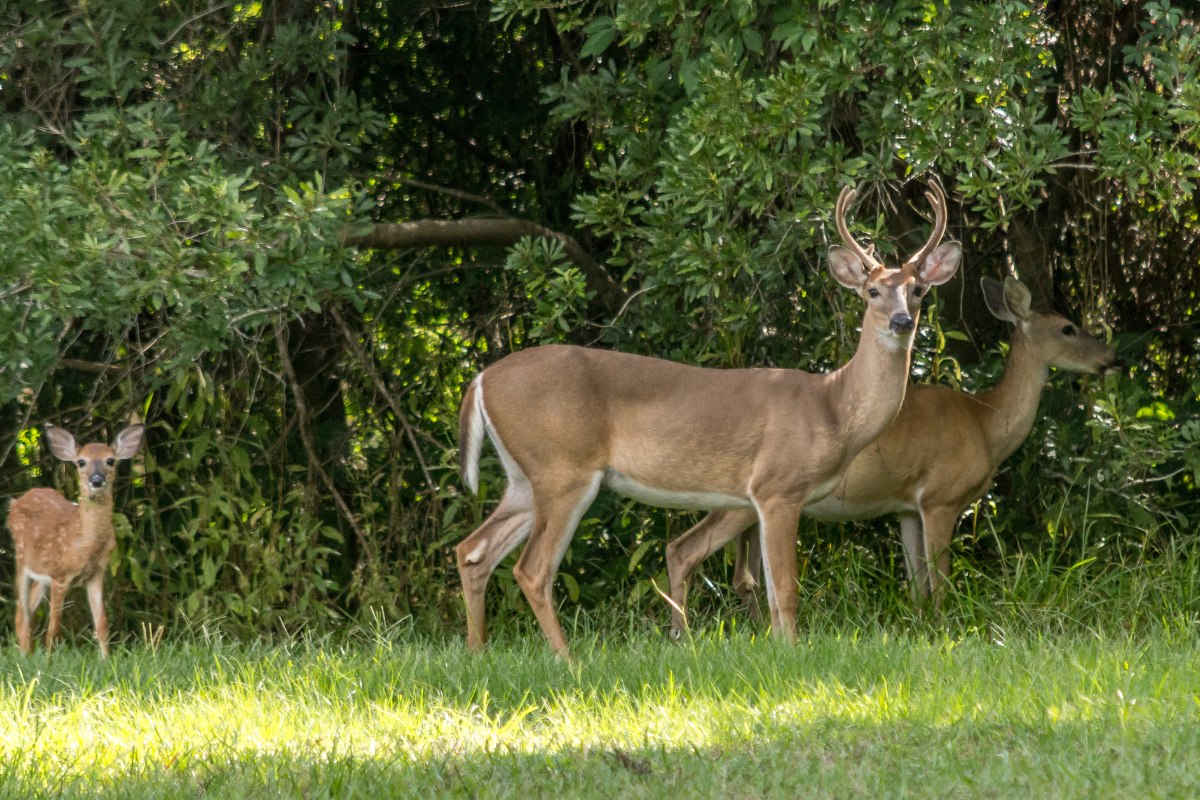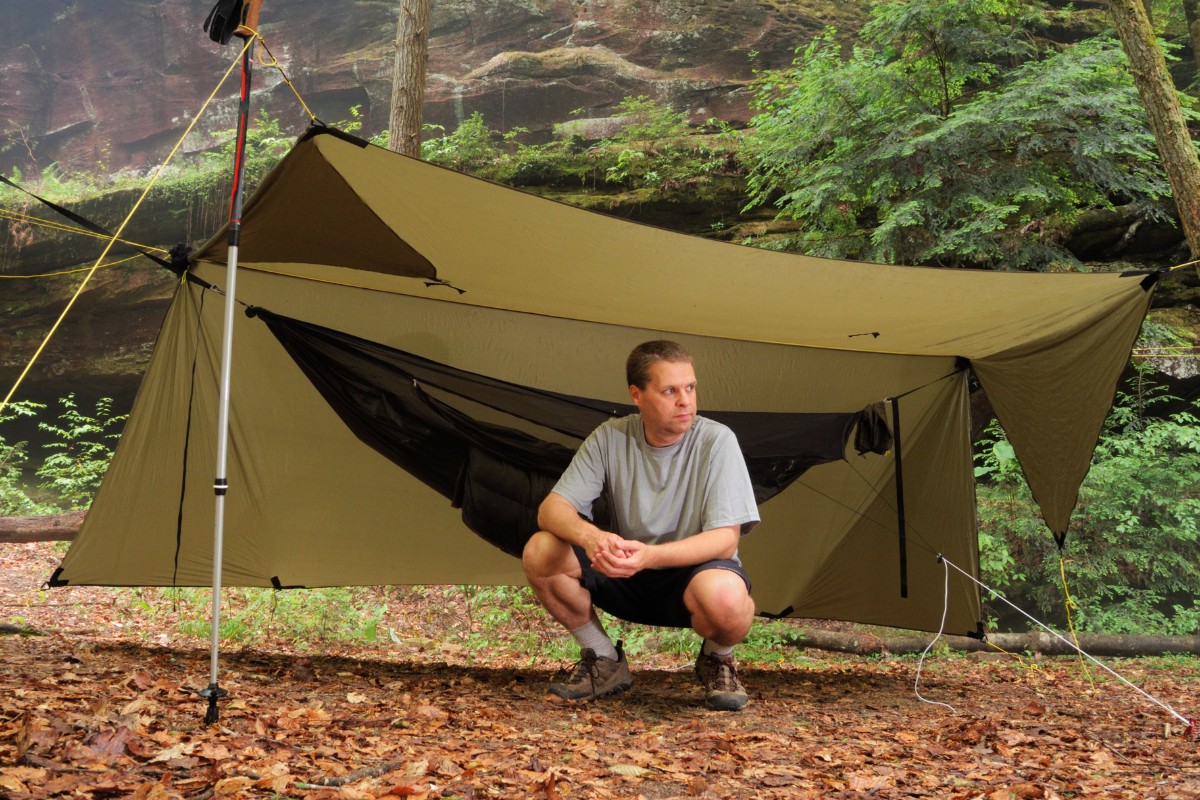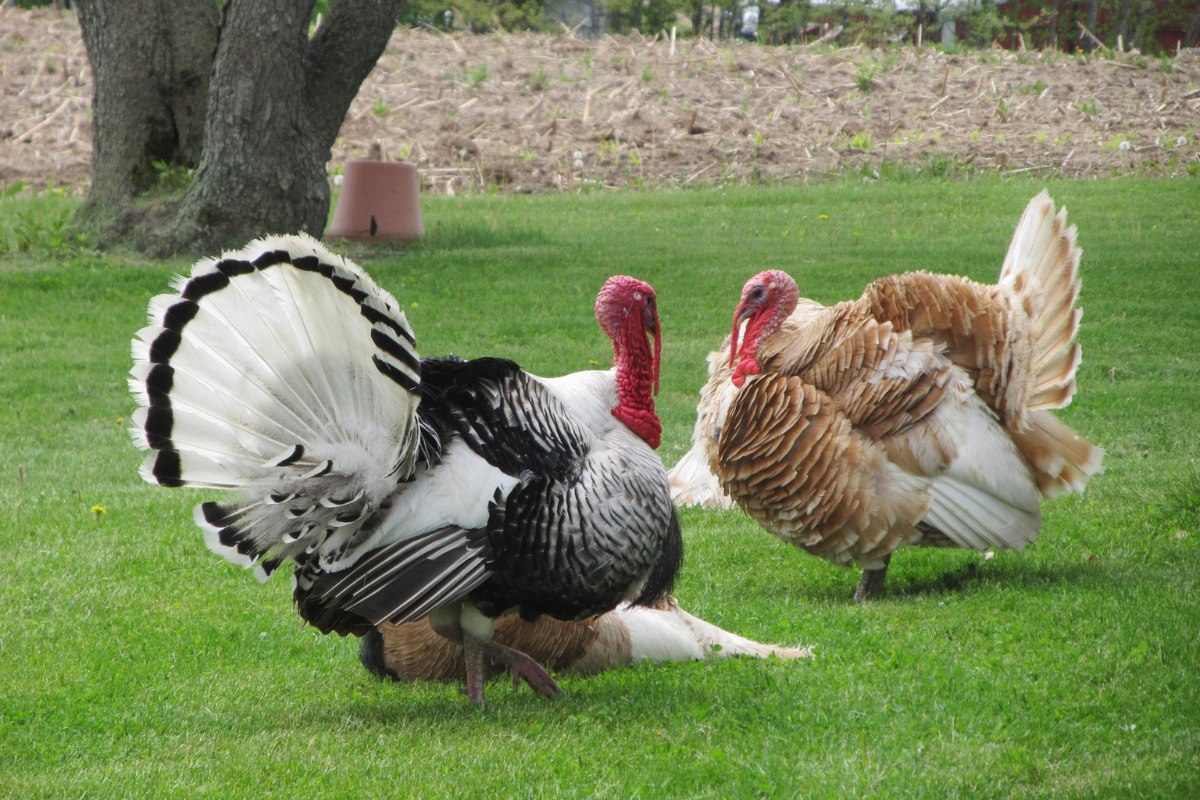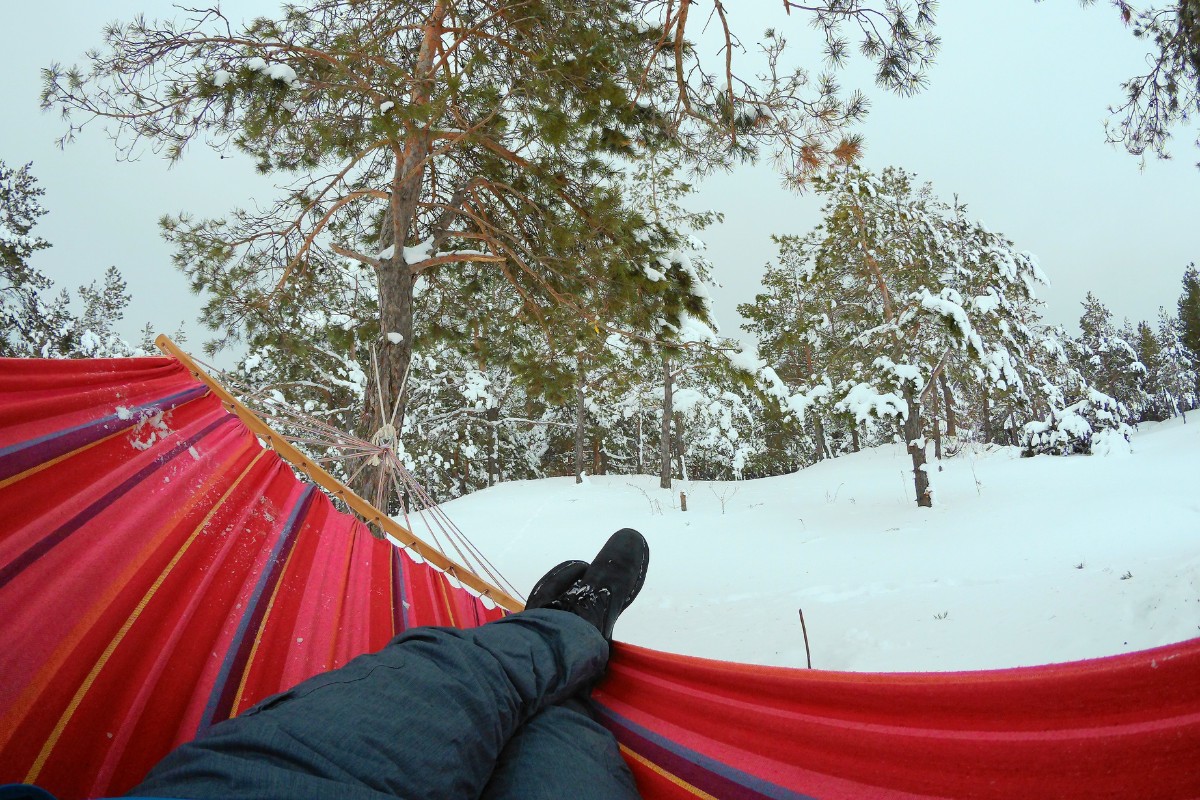Cold-weather hiking occurs in winter, late fall, and early spring. In some mountainous areas, it can also occur during the summer months. When the temperature begins to drop toward the freezing mark, extra precautions are necessary to navigate the backwoods safely.
Clothing Is Your Barrier Against the Cold
First, layering your clothing is essential. You will be exerting a lot of energy during ascents, which will produce heat and moisture in the form of sweat. On level trails and periods of rest, the moisture will cool and must be wicked away from your body to prevent you from becoming chilled. If you are particularly cold natured, you may wish to add a wool shirt over your synthetic wicking layer. However, you may also find that fleece insulates just as well without the bulk of wool. Of course, you will avoid cotton at all costs as it insulates poorly and, once wet, won’t dry out.
For cold weather hiking, plan on taking an extra set of synthetic long underwear as well as nylon and wool socks to change into upon reaching camp. Your perspiration will have moistened your clothing and changing into fresh clothing will retain warmth while you are not exerting yourself and producing extra body heat. The set that you remove can be washed out in camp. It will dry quickly and can be packed away for tomorrow.
Consider versatility in choosing a fleece hat. If your fleece hat is the type that leaves an opening for your face while covering your head and neck, you are ahead of the game. During calm weather, you can roll it up and wear it just covering your head and ears. When the wind picks up or the temperature drops, roll it down to cover your neck.
Mittens are warmer than gloves because they allow your fingers to group together and share warmth. Some hikers wear knit gloves covered by fleece mittens. This allows the hands to remain warm when the mittens must be removed to reach for something inside the pack. A fleece mitten that has a flap that covers your fingers, and then folds back toward the back of your hand can allow you to expose fingers without removing the mitten completely.
Guilt-Free Indulgence
You will be using a lot of extra calories to generate enough heat to keep you warm. Cold weather hiking is an opportunity to indulge in some guilt-free extra eating. You can burn as many as 8,000 calories a day. Plan for hearty food and snacks frequently. Drinking warm liquids such as soup, cocoa, tea, and coffee helps to warm you from the inside out and is more satisfying in colder weather. Steer toward decaffeinated drinks as caffeine has a mild diuretic effect which can lead to dehydration.
Don’t forget to increase your emergency food supply. If you are injured or lost and must remain in place awaiting rescue, staying warm will be challenging. You will need additional calories. Additionally, inclement weather may slow rescue efforts.
Getting a Good Night’s Sleep
If you sleep very cold, here are a few tricks to increase your warmth during cold weather hiking.
The first step to keeping warm starts at home while packing. Take your warmest sleeping bag (down is preferable). Consider a bag liner to improve the temperature rating. Pack an insulated sleeping pad. Be sure to pack a Nalgene bottle.
You can have a high-calorie snack before bed. This snack includes a carbohydrate and protein along with a warm drink. The warm drink feels good going down and helps to warm me from the inside out. The carbohydrate (starch/sugar) is quick energy, and the protein is a slower-releasing energy that helps keep me warm all night long. An example might be hot cocoa (warm drink), a chocolate bar (carbohydrate) and some nuts (protein). Another idea is hot decaffeinated tea (warm drink), crackers (carbohydrate) and cheese or peanut butter (protein).
Before going to bed, boil some water and add it to a Nalgene bottle (or two). Put the Nalgene bottles in your sleeping bag with you. It feels good to have one at your feet and one near the small of your back.
Sleep with your fleece hat on. If it is really cold, just sleep in your mittens and fleece jacket.
Not for Newbies or Loners
Even more important than usual, during cold weather hiking, it is imperative that someone know your whereabouts. This means information as to the beginning of your hike, your intended route, and the expected date of return to your vehicle. Leaving this information visible on the dash of your vehicle can alert rangers that you did not return when expected and possibly start rescue efforts sooner. It can be argued that leaving this information on your vehicle may alert would-be thieves to break in before you return. However, there are fewer people lurking around trail heads in the cooler months. Obviously, we can’t make this decision for you. You have to decide whether the possible early alert is worth the risk.
Cold weather hiking is not for the newbie. Neither is this the time to be hiking alone. The risks inherent to backpacking are increased with adverse conditions. Hiking in colder weather is, by definition, an adverse condition. You should be very comfortable with your basic hiking skills before attempting a cold weather hike. A hiker with advanced hypothermia cannot think clearly enough to get to safety alone or make a solid decision to sit and wait. This is the time when a good hiking buddy can literally save your life.
Hikers need to be aware of the signs of hypothermia. Suspect hypothermia if your hiking partner begins to slur his speech, talk incoherently or without clear meaning, walks in an erratic manner or is shivering uncontrollably. Should this occur, STOP, get him into a sleeping bag and give him something warm to drink. If necessary, get into the sleeping bag with him to share your body heat. Make camp. Your hike is over for the day.
Cold weather hiking leaves you vulnerable to frostbite. Toes are the most susceptible. Fingers and the tips of noses and ears run a close second. Check extremities often. Press gently on a suspected area. If it stays white after you remove pressure, suspect frostbite, slowly warm the affected area without rubbing, and seek medical attention immediately. Expect severe pain as the sensation returns to the frostbitten area. Analgesics from your first aid kit and elevation of the affected area will give a small measure of relief. Well, that doesn’t sound like much fun, does it? Where frostbite is concerned, an ounce of prevention is worth many pounds of cure. Cover extremities and keep them dry and warm.
